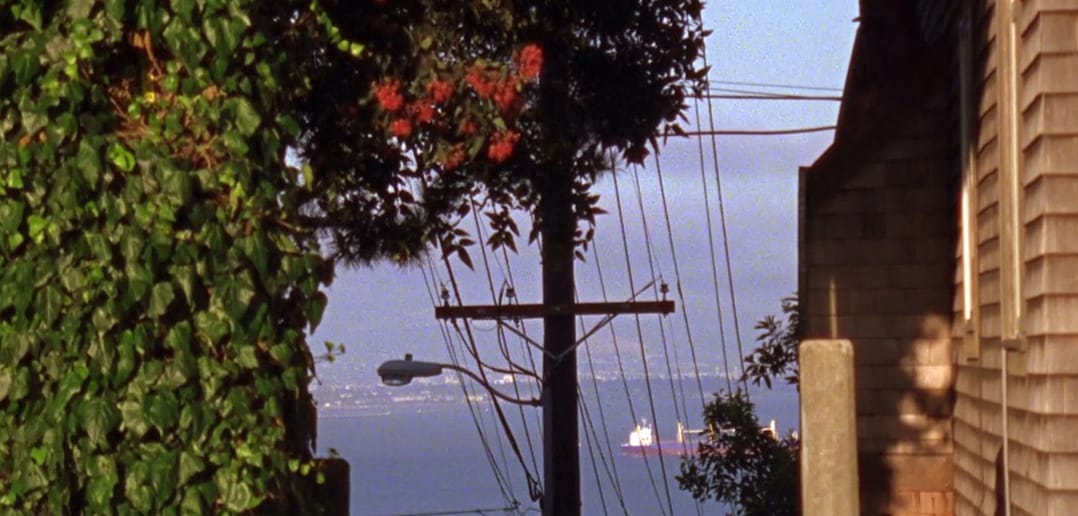The Joy of Life: Jenni Olson

Stunningly devoid of people, this poetic meditation on longing, landscape, cinema, and suicide is structured inthree parts: Bay Area landscapes; a poetic interlude by Lawrence Ferlinghetti (“in that vale oflight the city drifts, anchorless, upon the ocean”); and a critique of the Golden Gate BridgeDistrict’s suicide policy.
Light—barrels and barrels of Pacific shine collected by 16mm grain—is Olson’s principal study. Olson’s cinematic standard (stationary camera, long takes, voice-over narration) lullsthe viewer into a comfortable absorption of the script while simultaneously showingmagnificent littoral tours of in-between spaces: bridges, alleys, lust. Olson’s observationaltakes are paired with the diaristic banter of queer attraction among women. Complicated andunrequited moments of desire are contemplated in urban marginal spaces away from citycenters, far from bustling visual invasions of compulsive heterosexuality. It’s precisely in these discrete public arteries marked by a very queer wandering that Olsonquietly subverts the gender, purpose, and performance of historical acts of flaneurism.
Read my review of Jenni Olson's The Joy of Life on Directed By Women.